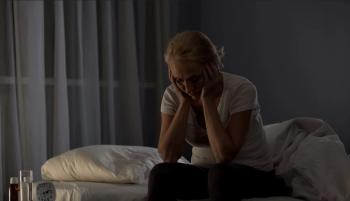
APSS: Patients Taking Experimental Hypnotic Snap Awake in the Morning
MINNEAPOLIS -- The experimental hypnotic NG2-73 appears to get people to sleep rapidly and allows them to awaken alert and refreshed, researchers said here.
MINNEAPOLIS, June 15 -- The experimental hypnotic NG2-73 appears to get people to sleep rapidly and allows them to awaken alert and refreshed, researchers said here.
"We saw no residual sedation in these patients and they had no problems with concentration or alertness," Gary Zammit, Ph.D., of Clinilabs, a New York-based research and consulting firm, told attendees at the Associated Professional Sleep Societies meeting.
In the double-blind, placebo-controlled, multi-center randomized trial, Dr Zammit and colleagues tested four doses of the GABA-a receptor agonist-1 mg, 3 mg, 10 mg, and 20 mg-on healthy participants in whom they created transient experimental insomnia.
The 77 placebo patients fell asleep in an average of 30.8 minutes after taking the sham medication, according to polysomnography recording. In a dose-response pattern, the 74 patients taking the 1 mg dose of the active drug fell asleep after 17.8 minutes (P=
Dr. Zammit said the transient experimental insomnia is created in healthy volunteers by putting the subjects into a laboratory environment and advancing their normal sleep times up to four hours.
"Most healthy people, under those circumstances have a hard time getting to sleep once lights go out," he said, noting that the transient insomnia model has been used extensively in tests of hypnotic medications.
NG2-73 is a partial agonist with preference for gamma-amino-butyric acid subtype A (GABA-a) receptors. Current benzodiazepine and some non-benzodiazepine hypnotics indicated for treatment of insomnia are full agonists acting at some or all of the receptors. NG2-73 binds at the alpha3 subunit, which may limit side effects, Dr. Zammit said.
Lynn Aneiro, M.H.S., one of the researchers and director of clinical operations for Neurogen, said the company will likely push for development of NG2-73 in a dose range lower than 10 mg. She said several phase II studies of the drug are underway.
Dr. Zammit said the drug was well tolerated with side effects of sedation, dizziness and somnolence expected. Headache was as common among those getting the active drug as in those getting placebo.
The only serious adverse event occurred to one patient in the treatment group who was involved in a motor vehicle accident nine days after participating in the experiment. Doctors said that the drug was not the cause of the accident.
Newsletter
Enhance your clinical practice with the Patient Care newsletter, offering the latest evidence-based guidelines, diagnostic insights, and treatment strategies for primary care physicians.


























































































































































































































































































































